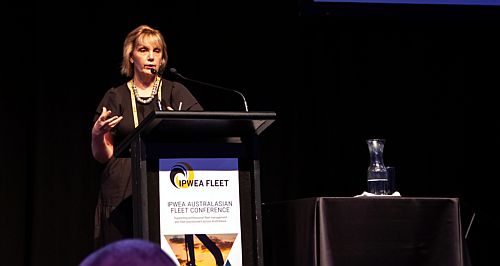Legal specialist highlights CoR issues

LEGAL expert Anne-Maree Coyne offered a Chain of Responsibility (CoR) refresher at this year’s Institute of Public Works Engineering Australasia (IPWEA) Australasian Fleet Conference in Brisbane, urging fleet managers to take an active role.
The CoR framework sets out the legal obligations of each participant in a transport supply chain, from operators to executives, aimed at improving safety outcomes.
“One of the things that I hear often when I'm speaking with practitioners about Chain of Responsibility is how hard it is to keep momentum and safety initiatives,” said Ms Coyne.
“That’s something that’s obviously really important for fleet managers, because those safety obligations don’t go away and it’s incredibly important for you all to be thinking about this.”
Ms Coyne spoke about the importance of educating executive teams, with many unaware of their CoR obligations and potential consequences.
"If you have heavy vehicles in your fleet (vehicles over 4.5t GVM), it’s crucial that you and your executive team understand your Chain of Responsibility obligations and act to avoid a higher risk of injuries, incidents, prosecutions, penalties and reputational damage,” she said.
“Yet many aren’t sure how to start or maintain the momentum for safety initiatives.”
During her presentation, Ms Coyne explained that one of the best ways to get buy in from an executive team, who are ultimately part of the ‘chain’, is to focus on the information you are providing as a fleet manager.
“Whether it is heavy vehicles covered under the Chain of Responsibility, or it's all vehicles when used for work and the workplace health and safety laws, the obligation is ‘what's reasonably practicable’ to keep people safe during transport activities,” she said.
“The managers and executives have to make sure that the organisation complies with the primary duties, so they have to make sure that people are kept safe. They really need to know resources and processes to reduce the risks and also respond to incidents, so they need high level reports.”
The consequences of not complying are damaging, and regulations and enforcement are both “ramping up”.
“We’re really at the stage where if an organisation was to receive the maximum penalty, it’s a maximum of just over $3.5 million. You might think, well how often does that happen, but below that number there can be significant impacts for an organisation,” she stressed.
“But more importantly for the executive duty, individuals have their own responsibility and can be prosecuted personally. There is a maximum of just over $350,000 per individual. So that’s a significant personal liability and, also, they can be jailed for a maximum of up to five years – or both (fined and jailed).
“I think it’s so important that we understand this, as fleet practitioners, and we convey that to the executive team. There can also be significant reputational damage.”
In terms of prompting buy in from high level employees, fleet managers need to present the facts and educate executives that require a high level of awareness.
“They need those high-level reports on the implementation,” she said.
“Then there is verification because a lot of people don’t realise there’s the verification piece. They have to have an awareness at a high level of the monitoring that’s going on, to make sure there actually is that compliance.
“They also need to know about continuous improvement, and they need to know about exceptions.”
Speaking to GoAuto after the conference, Ms Coyne suggested fleet managers visit the NHVR website where they can find various free resources.
“Or for those who want to find out and rectify their CoR gaps, I offer CoR implementation services and can be contacted on annemaree@modus.management,” she said.